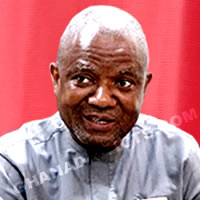

According to the extract from the 2000 National Population and Housing Census, the population of the Ga South Municipal Assembly is estimated at 210,727, with inter-censal growth rate of 3.4%. The projected population for the year 2009 is 284,712, which may be 316,091 by 2012. The growth rate is as a result of the Municipality’s closeness to the capital city, Accra – serving as a dorm for many workers in Accra and Kasoa. The female population as at the year 2000 is 50.1% of the total population whiles males make up the other 49.9%.
The population is mainly concentrated along the peri-urban areas of the Municipality particularly on the border with the Accra Metropolis. The urban population constitutes 76.04% with the remaining 23.96% residing in the rural portion of the Municipality.
Spatial Analysis
Spatial Analysis Spatial Polarization of infrastructure is a characteristic that dates back to the colonial system. The geographical pattern of resource investment has not changed much with an inequitable distribution of resources (economic and social infrastructure) to the disadvantage of the rural sector of the economy. Most of the socio-economic facilities are concentrated in some key communities like Mallam, Weija and Gbawe.
The Ga South Municipality is Peri-Urban with both a linear and nucleated settlement pattern. Most of the rural areas of the municipality are characterized by a dispersed settlement pattern. i) Surface Accessibility Road network/transport system is the main surface accessibility in the district. One of the major urban roads in the Greater Accra is located in this Municipality. There are so many untarred trunk roads in this Municipality.
Date Created : 11/20/2017 2:56:25 AM













 facebook
facebook
 twitter
twitter
 Youtube
Youtube
 +233 593 831 280
+233 593 831 280 0800 430 430
0800 430 430 GPS: GE-231-4383
GPS: GE-231-4383 info@ghanadistricts.com
info@ghanadistricts.com Box GP1044, Accra, Ghana
Box GP1044, Accra, Ghana